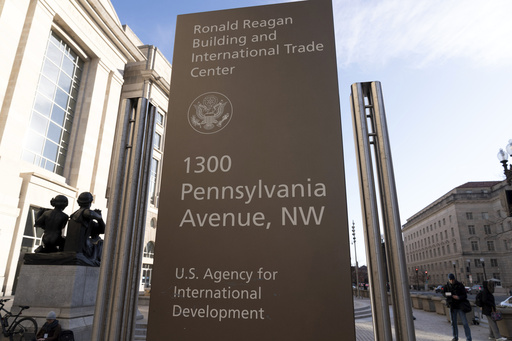In a significant policy shift, the Trump administration announced on Sunday that nearly all staff members at the U.S. Agency for International Development (USAID) would be placed on leave, marking one of the most extensive reductions in the agency’s workforce in its 60 years of operation. This sweeping action also includes plans to eliminate at least 1,600 U.S.-based positions as part of a broader effort to diminish federal government size, a key objective supported by President Donald Trump and his associate Elon Musk.
This announcement follows a federal court ruling on Friday that permitted the administration to proceed with its strategy of removing thousands of USAID employees from their roles, both domestically and globally. U.S. District Judge Carl Nichols dismissed arguments from workers seeking to temporarily halt the plan through legal action.
According to notices distributed to USAID personnel, effective at 11:59 p.m. EST on February 23, 2025, all direct hire employees, aside from those deemed essential for critical operations, core leadership, or specific programs, will be put on administrative leave worldwide. The agency also indicated a reduction in force would commence that aims to eliminate 2,000 U.S.-based jobs. However, a more recent communication on the USAID website stated the number of targeted positions is 1,600, leaving some confusion regarding the actual figure, as no explanation for this difference has been provided. Neither USAID nor the State Department offered immediate responses to inquiries concerning the matter.
The implications of these cuts suggest that many employees based in Washington who are being placed on leave may soon face termination of their positions. Pete Marocco, the deputy administrator leading USAID, indicated plans to retain approximately 600 employees—mostly from the U.S.—to continue essential operations, such as coordinating travel for USAID personnel and their families stationed overseas.
This strategy represents an intensification of a month-long initiative aimed at disbanding the agency, which has included plans to relocate its headquarters, as well as the cessation of numerous aid and development programs around the globe following a freeze on foreign assistance. While a court temporarily halted this funding freeze, both Trump and Musk have criticized USAID’s contributions as extravagant and accused it of promoting a liberal agenda.
Legal actions initiated by various government employee unions, USAID contractors, and others assert that the administration does not have the constitutional authority to dismantle an independent agency or to terminate programs funded by Congress without legislative approval.
This shift in policy contradicts longstanding U.S. positions that view international aid and development efforts as integral to national security—promoting stability, aiding economic growth, and forging international alliances. The recent announcements regarding staff layoffs come on the heels of hundreds of USAID contractors receiving generic termination letters in the past week. These letters, which do not specify the names or roles of the workers involved, could complicate the process for those affected in claiming unemployment benefits.
A different judge, overseeing a separate lawsuit concerning USAID, stated earlier this week that the administration must comply and restore funding to affected programs globally, despite ongoing restrictions. Judge Nichols also outlined that the administration could initiate a 30-day window for USAID staffers and their families to return to the U.S. if they wish for their travel expenses to be covered. He assured that employees working abroad would retain their positions on leave beyond this period, even if they opted to stay overseas.
Staff members stationed internationally have expressed concerns that difficulties stemming from ongoing funding issues and the reduction of headquarters staff could hinder safe and organized returns, particularly for those with children in school, homes to sell, or ill relatives. USAID’s recent notice reiterated the agency’s commitment to safeguarding its overseas personnel and assured that support systems would remain accessible for staff working abroad.
